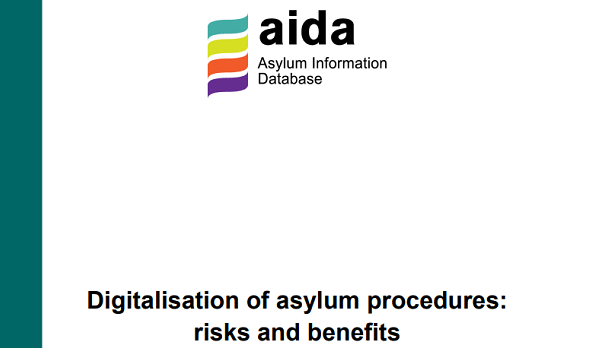This new comparative report provides an overview of the use of digital tools and remote working methods in 23 European countries based on ECRE’s Asylum Information Database (AIDA). It questions the risks and benefits of the use of digital tools in asylum processes and highlights several fundamental guarantees and procedural safeguards which must continue to apply to ensure that they do not infringe the existing European Union asylum acquis.
In practice, the use digital tools and remote working methods are widely disparate and remains the exception in Europe. Nevertheless, some tools have been gradually used in recent years to perform tasks in the context of border management and control, identity checks, analysis of various data, as well as in the determination process of applications for international protection. The outbreak of the COVID-19 pandemic in 2020 further paved the way for their increased use in the future. The Common European Asylum system (CEAS) does not provide for clear rules on the use of digital tools in the asylum procedure and there is little guidance available in this area. This leaves Member States discretion and flexibility as regards their application in national asylum processes and raises complex legal questions on the interplay between refugee protection, data protection and digitalisation.
The report identifies a number of challenges and limitations in the use of digital tools across the different stages of the asylum procedure. These constraints may undermine the right to asylum where they create additional and unnecessary obstacles which prevent asylum seekers from effectively exercising their rights. The report also acknowledges the potential benefits of digital tools in limited and well-defined circumstances, notably when they aim to mitigate the negative effect of restrictive measures and help to ensure the continuity and functioning of asylum systems.
For further information:
- ECREs, Asylum Information Database AIDA

